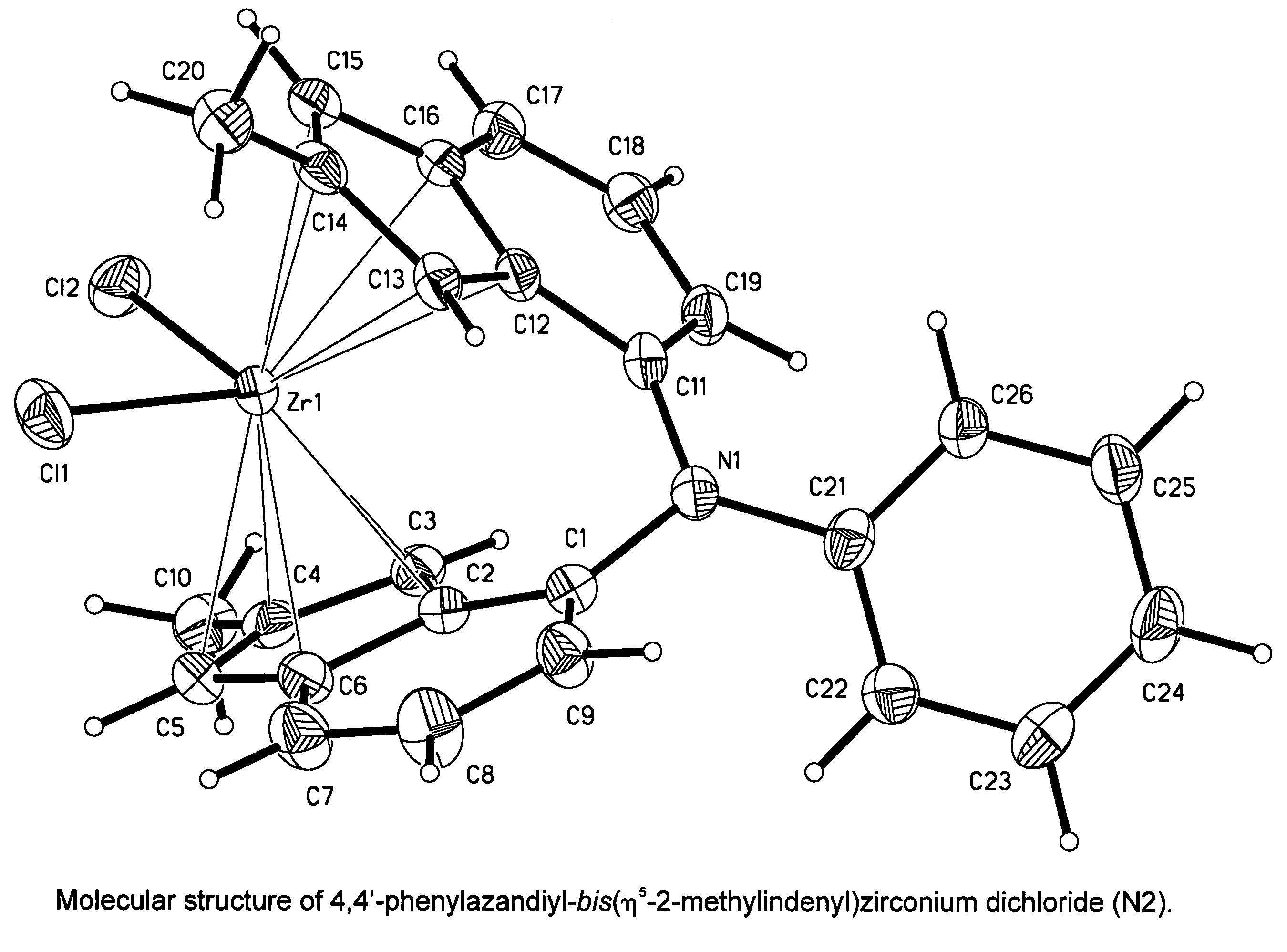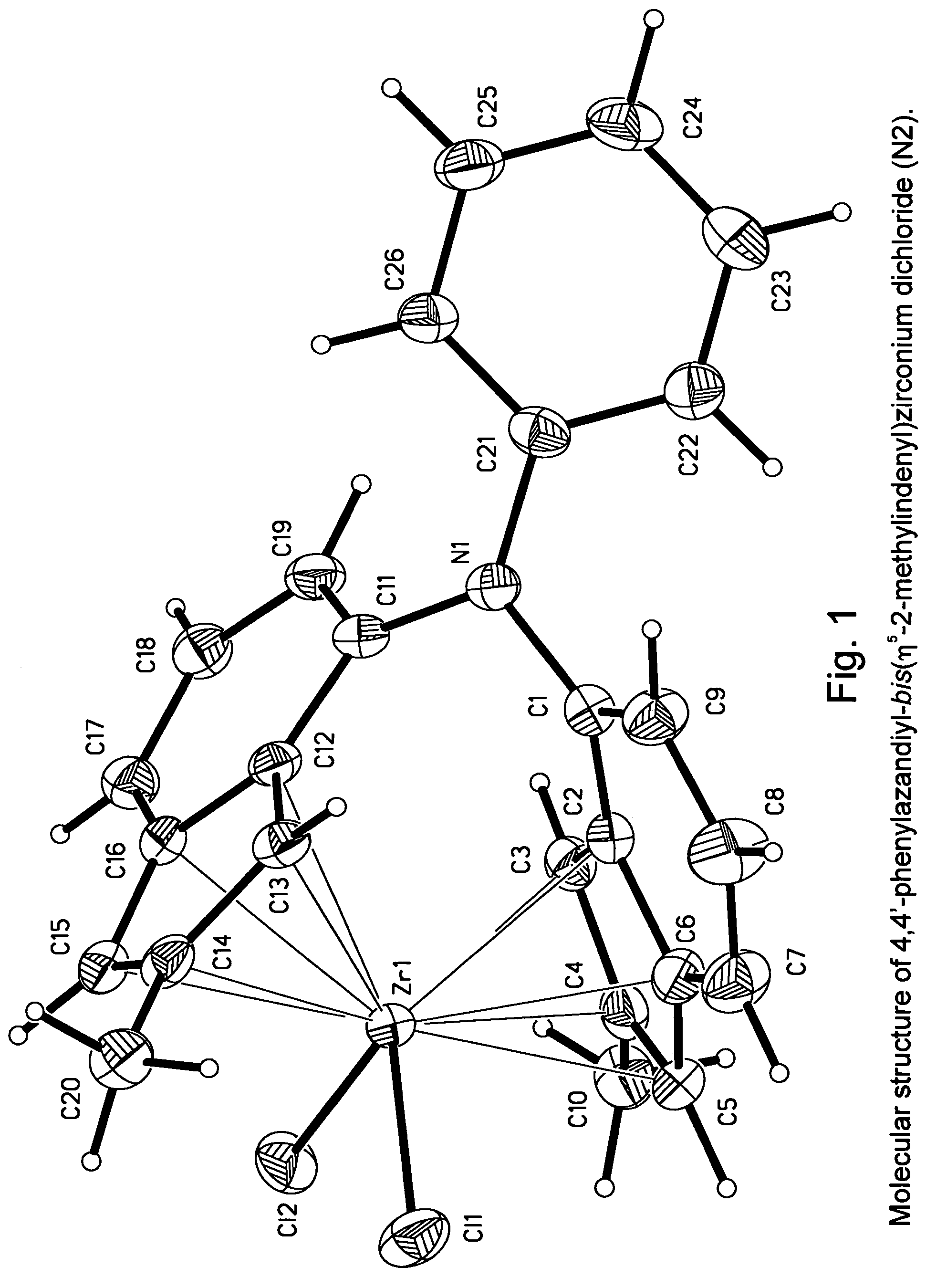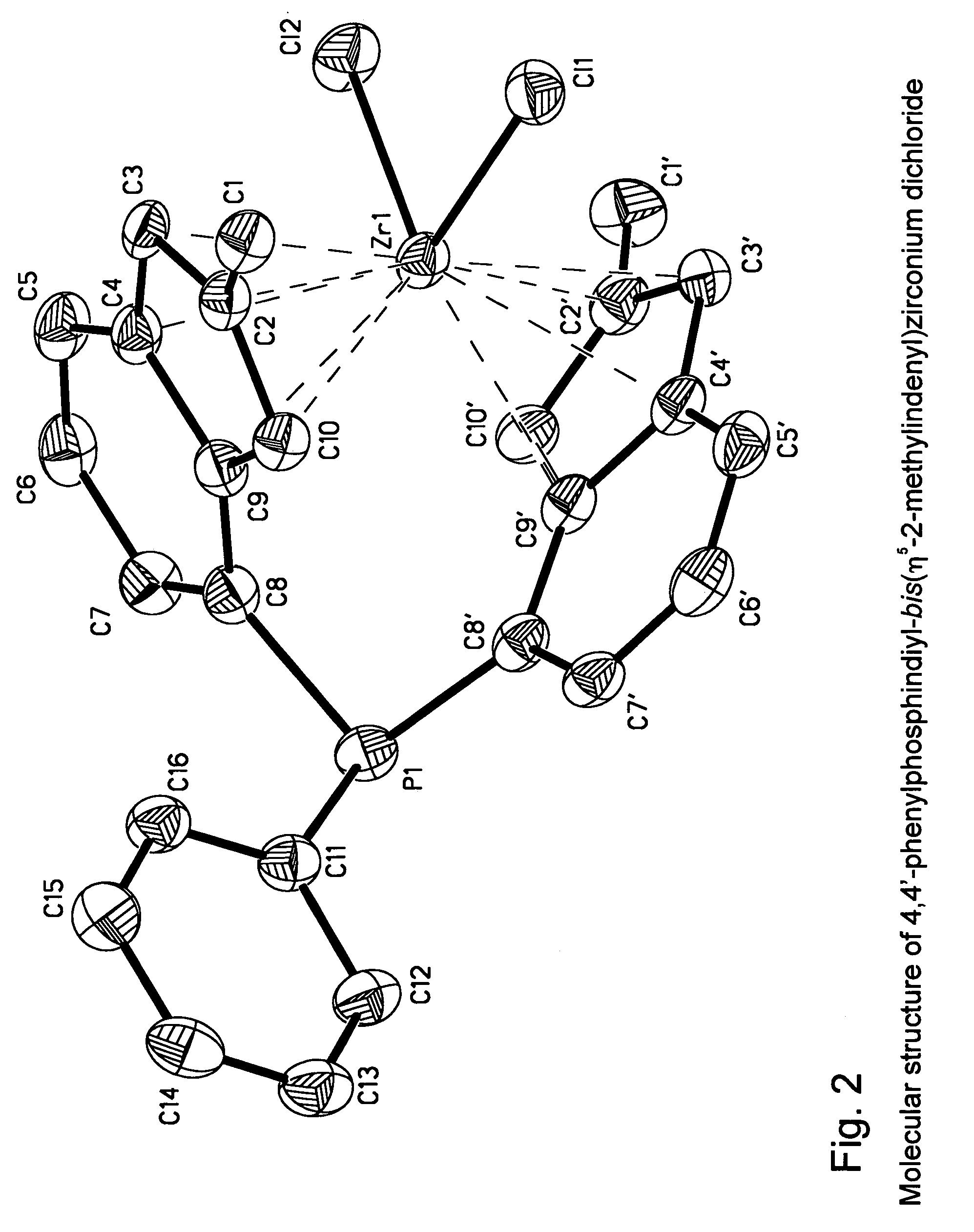Heteroatom bridged metallocene compounds for olefin polymerization
a metallocene compound and heteroatom technology, applied in the direction of group 3/13 element organic compounds, catalyst activation/preparation, group 5/15 element organic compounds, etc., can solve the problem of time-consuming and laborious synthesis of such materials, rac and meso isomers that are difficult to separa
- Summary
- Abstract
- Description
- Claims
- Application Information
AI Technical Summary
Benefits of technology
Problems solved by technology
Method used
Image
Examples
example 1
Synthesis of 4,4′-sulfandiyl-bis(η5-2-methylindenyl)zirconium dichloride (S2)
[1935]
4-bromo-2-methyl-1-indanone via 3-(2-bromophenyl)-2-methylpropionyl chloride via 3-(2-bromophenyl)-2-methylpropionic acid
[1936]
[1937]In a three-necked round-bottom 2000 ml flask equipped with a reflux condenser, a pressure-equalizing dropping funnel, and magnetic stirring bar, 20.5 g (0.89 mol) of sodium metal was dissolved in 450 ml of dry ethanol. To the resulting solution, 155 g (0.89 mol) of diethyl 2-methylmalonate in 150 ml of dry ethanol was added dropwise within 15 min. This mixture was stirred for 15 min; then, 186 g (0.89 mol) of o-bromobenzyl bromide was added with vigorous stirring at such a rate, so that the reaction mixture was maintained at a gentle reflux. Additionally, this mixture was refluxed for 4 hours, then cooled to room temperature. A solution of 151 g of KOH in 400 ml of water was added. This mixture was refluxed for 3 hours to saponificate the ester formed. Ethanol and water ...
example 2
Synthesis of 4,4′-sulfandiyl-bis(η5-indenyl)zirconium dichloride (S1)
4-Bromoindan-1-one via 3-(2-bromophenyl)propionyl chloride via 3-(2-bromophenyl)propionic acid
[1955]
[1956]In a three-necked round-bottom 2000 ml flask equipped with a reflux condenser, a pressure-equalizing dropping funnel, and magnetic stirring bar, 26.4 g (1.15 mol) of sodium metal was dissolved in 850 ml of dry ethanol. To the resulting solution, 184 g (1.15 mol) of diethyl malonate was added dropwise within 15 min. This mixture was stirred for 15 min; then, added dropwise to a solution of 239 g (0.96 mol) of 2-bromobenzylbromide with vigorous stirring over 3 hours. Additionally, this mixture was refluxed for 3 hours, and then cooled to room temperature. To this mixture, a solution of 230 g of KOH in 600 ml of water was added. This mixture was refluxed for 3 hours to saponificate the ester formed. Ethanol was distilled off. To the residue, cold water was added to a volume equal to ca. 2000 cm3. Then, 12 M HCl (t...
example 3
Synthesis of 4,4′-phenylazandiyl-bis(η5-2-methylindenyl)zirconium dichloride (N2)
N,N-Bis(2-methyl-1H-inden-7-yl)-N-phenylamine
[1974]
[1975]Under an argon atmosphere, a mixture of 2.79 g (30 mmol) of aniline, 14.5 g (60 mmol) of 4-bromo-1-methoxy-2-methylindane, 20.2 g (180 mmol) of tBuOK, 30 ml of 0.2 M (6.0 mmol) solution of PtBu3 in toluene, and 180 ml toluene, 0.67 g (3.0 mmol) of Pd(OAc)2 was added. This mixture was stirred for 8 hours at 100° C. Then, this mixture was washed with 600 ml of water, and organic layer was separated. The aqueous layer was extracted with 3×150 ml of methyl-tert-butyl ether. To the combined extract, 250 ml of methanol and 150 ml of 10 M HCl were added; and the resulting mixture was refluxed for 7 hours. Sodium bicarbonate (ca. 130 g) was added in small portions until carbon dioxide evolved. The product, N,N-bis(2-methyl-1H-inden-7-yl)-N-phenylamine, was isolated by flash chromatography on Silica Gel 60 (40-63 μm, d 50 mm, l 400 mm, eluant:hexanes-dichl...
PUM
 Login to View More
Login to View More Abstract
Description
Claims
Application Information
 Login to View More
Login to View More - R&D
- Intellectual Property
- Life Sciences
- Materials
- Tech Scout
- Unparalleled Data Quality
- Higher Quality Content
- 60% Fewer Hallucinations
Browse by: Latest US Patents, China's latest patents, Technical Efficacy Thesaurus, Application Domain, Technology Topic, Popular Technical Reports.
© 2025 PatSnap. All rights reserved.Legal|Privacy policy|Modern Slavery Act Transparency Statement|Sitemap|About US| Contact US: help@patsnap.com



